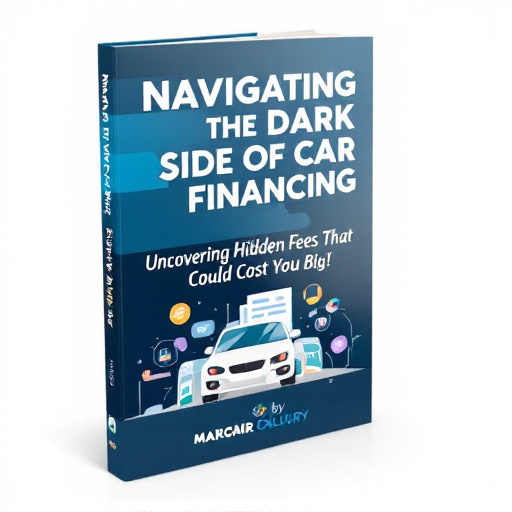Related Articles
- Unveiling the Unthinkable: How Your Social Media Posts Could Impact Your Car Insurance Premiums
- "From Showroom to Social Media: How Dealerships are Becoming Digital Storytellers in 2023"
- "From Showroom to Stream: The Rise of Virtual Reality Test Drives at Dealerships"
- Revving Up Sales: How Virtual Reality is Transforming the Dealership Experience for Shoppers and Sellers Alike
- Selling Experiences: How Dealerships Can Transform into Immersive Automotive Entertainment Hubs
- The Surprising Impact of Your Credit Card Habits on Car Financing: What You Didn't Know!
The Surprising Impact of Electric Vehicle Incentives on Traditional Car Financing Strategies
The Surprising Impact of Electric Vehicle Incentives on Traditional Car Financing Strategies
The surge in electric vehicle (EV) adoption has not only transformed how we think about transportation but has also significantly altered traditional car financing strategies. Through enticing incentives, states and manufacturers are reshaping the financial landscape, presenting new opportunities and challenges for car buyers and financial institutions alike.
The EV Revolution: Unplugging the Conventional Financing Approaches
As a 28-year-old writer navigating the bustling streets of modern car ownership, I often find myself in the midst of spirited conversations about the future of driving. One recurring theme? The electrifying rise of electric vehicles and the financing frameworks powering this phenomenon. According to the International Energy Agency (IEA), electric vehicle sales surged to 10.5 million in 2022, a staggering 55% increase from 2021.
With this upward trend, traditional financing methods—think loans, leases, and interest rates—are making way for an enticing array of incentives designed to get more people behind the wheel of an EV. Coupled with government support and tax rebates, the conventional car financing landscape is swirling into a conundrum that is difficult to ignore.
Incentives—The Electric Car's Secret Weapon
So, how do these incentives actually impact financing strategies? Let’s take the case of the $7,500 federal tax credit available in the United States as an example. It incentivizes buyers and significantly lowers the effective cost of purchasing an electric vehicle. This credit can influence a buyer's decision-making process, as they may choose to opt for an EV over a gasoline-powered car simply because the financial benefits outweigh those of a traditional vehicle. A study by the U.S. Department of Energy found that around 55% of EV buyers cited tax credits as a primary motivation for their purchase.
But it isn't just taxpayers who benefit; dealers and lenders are also adjusting their strategies. Financing institutions advertise lower interest rates for EVs, aiming to entice buyers who initially may have been hesitant to abandon traditional vehicles.
Rewired Thinking: Lenders Are Adapting
With many consumers showing interest in electric vehicles, lenders have started to tailor their financing options to match this new market demand. One notable example is Ally Financial, which in 2021 launched its “EV SmartLease” program, offering flexible lease terms with enhanced residual values on electric vehicles. This program allows buyers to transition from traditional vehicles without experiencing potential losses commonly associated with lease-end values.
Moreover, credit unions like Navy Federal and other community-focused lenders are also taking the plunge into the EV financing pool, recognizing the potential for growth. They are expanding product offerings related to EV loans and refinancing options to meet the financial needs of their members.
Shifts in Consumer Preferences
As a casual observer of car trends and a passionate advocate for sustainability, I marvel at how consumer preferences have undergone a seismic shift. Today’s car buyer is far more environmentally conscious than ever before. A 2022 survey conducted by McKinsey found that 60% of respondents say they would consider purchasing an electric vehicle because of environmental reasons. But this doesn't just stop at the car selection; it extends into how buyers perceive financing options as well.
This shift in awareness pushes financial institutions to create more consumer-friendly programs. Think cashback offers for EV buyers or rate reductions for environmentally friendly vehicles. Consumers increasingly expect this from lenders, leading to new standards in financing strategies.
The Role of Leasing in EV Adoption
Here’s where leasing enters the spotlight. Leasing has traditionally been more favored for luxury vehicles, but it’s taking a whole new turn in the EV sector. The allure of a lower monthly payment and the opportunity to drive a new car every few years can be incredibly attractive, particularly in a rapidly evolving field like electric vehicles.
Consider this: with advancements in EV technology, a two- or three-year lease allows consumers to sidestep concerns about rapidly depreciating vehicle values and changing technology. As electric batteries become more affordable and charging infrastructure expands, consumers are feeling more secure about leasing an EV.
A Case Study: Tesla Financing
Take Tesla, for instance. Known for its high-tech vehicles and networking capabilities, Tesla has introduced a unique financing model that includes direct sales and leasing options. They offer a referral program that rewards buyers and even provides a pathway for former gas car owners with a trade-in system. As a result, Tesla remains ahead of the curve, redesigning traditional financing models to adapt to the soaring popularity of electric vehicles.
The success of Tesla’s financing strategy highlights the relationship between EV incentives and consumer behavior, which contributes to significant growth within the entire electric vehicle market.
Challenges in the New Financial Landscape
While there are many upsides, the electrification of transportation doesn't come without challenges. Some traditional lenders hesitate to finance electric vehicles due to concerns about long-term battery life, depreciation, and limited resale markets. An alarming statistic from the National Automobile Dealers Association (NADA) showed that the average depreciation for EVs was approximately 45% after three years compared to 36% for the average gas-powered vehicle. This can dissuade potential buyers and create hesitancy among lenders, pointing to a potential disconnect in perceptions.
Consequently, some financial institutions grapple with fears of profitability amid ongoing shifts in the automotive market. This may result in stricter credit criteria or higher interest rates, posing further challenges for low-income consumers who genuinely want to switch to electric alternatives.
What to Expect: A Future Where Financing Has No Limits
The government’s commitment to increasing electric vehicle adoption is clear, with ambitious goals to have a significant percentage of new vehicle sales being electric by 2030. In response, more innovative financing strategies are bound to emerge. Picture a future where AI-driven financial advisories assess your financial history and offer tailor-made EV financing plans like no other.
Imagine one-click loan approvals, speedier credit assessments, and personalized repayment plans that adapt to your circumstances, all thanks to the merging of technology and financing. This type of agility will create a system where consumers can effortlessly transition from conventional vehicles to electric ones.
Conclusion: Embracing the Change
In wrapping up our whimsical journey through the shifting landscapes of electric vehicle financing, it's evident that as we embrace technology, the road ahead continues to evolve. For car buyers, navigating this new terrain may initially seem daunting, but with the right tools and incentives, transitioning to electric vehicles can be both exciting and rewarding. As consumers become progressively more aware of their options, we can expect financial institutions to innovate continuously, meeting the dynamic needs of a changing world.
In the end, as both a writer and an ardent supporter of sustainability, I genuinely believe that a harmonious fusion of incentives and financing will not only transform the auto industry but also create a cleaner, greener future for generations to come.





